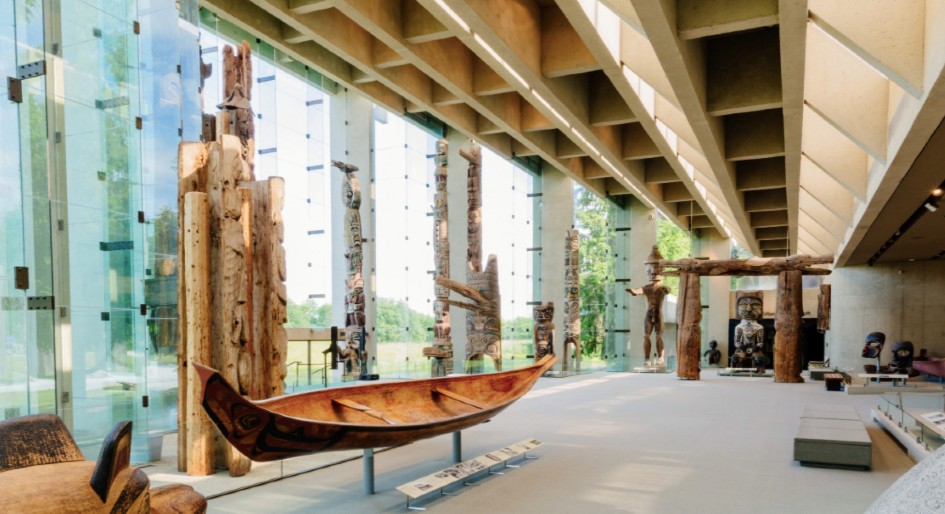The Museum of Anthropology (MOA) at UBC has begun preparations for a rebuild of its iconic Great Hall that will upgrade the resiliency of the space and protect its collection in the event of a major earthquake.
Opened in 1976, the Arthur Erickson-designed museum was inspired by the cedar post-and-beam construction of traditional west coast Indigenous villages. The Great Hall houses an extraordinary collection of massive carvings from northwest coast First Nations that have deepened visitors’ understanding of this land, its people, and their history.
The most recent round of UBC building evaluations, undertaken as part of a campus-wide seismic resilience plan, has identified the Great Hall as one of the spaces at greatest seismic risk. Based on simulations for major earthquake scenarios, it was quickly elevated on the university’s priority list for seismic upgrading.
The university essentially had two options: reinforce the Great Hall’s existing structure, or rebuild it completely. To reinforce the existing structure to today’s building standards would require significant modifications to its columns, plus the addition of new columns and brackets that were never part of Erickson’s vision. Alternatively, a complete rebuild of the Great Hall could retain the appearance of Erickson’s original design, preserving the clean lines and distinctive silhouette for which it is known.
As the undertaking calls for a sensitive approach given the heritage value of both the building and its site, the university met with the Arthur Erickson Foundation, which advocates for proper stewardship of Erickson’s legacy. Representatives from the Musqueam Indian Band also participate in planning meetings and provide a critical cultural perspective for the project team to take into account. Indigenous communities and families whose cultural objects must be relocated elsewhere in the museum during construction are providing input into protocols around moving the objects and re-installing them after the Great Hall is rebuilt.
“This seismic work is critical to preserving the integrity of this architectural gem,” says MOA director Anthony Shelton. “It also provides long-term safety for the cultural objects displayed within this space, ensuring the rich Indigenous knowledge and cultures represented in these objects are preserved for many generations to come.”
The seismic upgrades will be achieved using base isolation technology. In this type of construction, the Great Hall will be placed over rubber or sliding bearings (known as base isolators) in between the foundation (footings) and the superstructure (columns and beams). As the ground shakes, the isolators will allow the building to move, taking up most of the energy and protecting the building’s structure.
Construction is expected to progress throughout 2021, with the aim of re-opening the Great Hall in late 2022. MOA will remain open during the seismic upgrades of the Great Hall.
Photo by Cory Dawson





